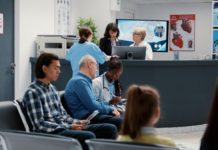As a healthcare professional, you understand that providing excellent service is the key to your facility’s success. In this demanding and ever-evolving industry, it can be difficult to stay up-to-date with the latest trends and best practices. But one relatively simple tool can help you improve your healthcare services in a significant way – lifts! Lifts aren’t just for moving heavy equipment or supplies; they also offer several advantages regarding patient care.
Whether you’re dealing with limited space, mobility challenges, or simply need an efficient transport solution for your daily routines, having quality lifts in place will benefit staff members and patients alike. Learn more about how these helpful devices can benefit your practice.
Overview of the Benefits of Medical Lifts
Medical lifts are a practical way to assist people with movement and mobility needs, offering advantages that cannot be overlooked. With the help of powered lifts and slings specifically designed for medical use, patients can be efficiently transferred from one spot to another. These lifts allow caregivers to minimize the physical effort required for lifting and reducing stress on the patient’s body.
Additionally, using a medical lift eliminates additional manual movement, providing both safety and stability while accommodating any angle of lift needed. As an affordable, efficient choice that aids in transferring patients to nursing facilities or at home, medical lifts set a much-needed standard that extends beyond traditional methods.
What To Consider Before Purchasing A Lift For Your Medical Facility
Purchasing a lift for your medical facility is not a decision to take lightly. Careful consideration must be given to the type of lift needed, its location, and its intended use. It is essential to ensure the lift is suitable for either short or long-term use before spending. Grants are available for stairlifts in certain situations, so researching grants for stairlifts may also be an option when budgeting for a new lift. Ensuring all safety requirements are met before choosing a lift will help mitigate issues. Ultimately, careful consideration of grants, specs, and local standards should provide peace of mind that the right choice for a medical facility has been made.
Different Types of Medical Lifts and Their Uses
As anyone who works in the medical field knows, many of our elderly loved ones require assistance to move from place to place. That’s where medical lifts can be useful, as they provide the extra height and support needed for these individuals. There are numerous types of lifts available for use with different needs in mind. The most popular are lift chairs which are great for helping people into a standing position or lifting them onto beds, wheelchairs, and more. Ceiling lifts are ideal when there is no one to help an individual lift themselves as they function using a motorized overhead track system and feature a tethering system that allows personnel to move a person up and down safely.
For those with limited mobility who wish to remain independent in their homes, portable patient lifts are essential – lightweight enough that the elderly can take them wherever they need. So no matter what kind of lift your patients may require, rest assured that you can provide quality care due to the various types that exist today.
Tips for Proper Care and Maintenance of Your Medical Lift
Proper care and maintenance of a medical lift is essential for ensuring safe patient handling and an uncomplicated operating experience. Caring for such a complex device can be intimidating, but luckily, with a few tips and tricks, your lift can stay running safely for years. Start by setting up regular inspections with a qualified technician who can evaluate the condition of your equipment, check for any problems or safety hazards, and ensure everything is running smoothly.
Read the operator’s manual that came with your lift to understand how it works and what parts go where. Always use genuine replacement parts when repairing or maintaining your medical lift; there may be cheaper alternatives on the market, but they won’t offer the same safety assurance as original certified items.
Finally, monitor usage and time in service; certain components will need to be replaced more often than others depending on their level of use, so keep track of each component’s cycle date to ensure you’re staying caught up on all maintenance procedures.

Medical lifts can significantly improve the affordability and convenience of patient care by providing a safe and efficient way to transfer patients to the medical facility. Whether running a small handful of on-site services or throughout your facility, having the right lift can help reduce costs and improve patient comfort. With a wide array of different types available and tips for proper care and maintenance, you should now feel better prepared to make an educated decision about which type of lift is right for you.
Most importantly, always research the benefits of implementing a medical lift before making any purchases; understanding how they work and their various uses can be invaluable in achieving safety and cost-effectiveness in your facility.
















